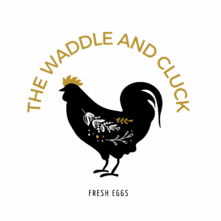Hoarfrost is one of those winter wonders that can stop you in your tracks, even if you’re not looking for it. It forms overnight on cold, clear nights when water vapor freezes directly onto surfaces like trees, fences, and grass. By morning, the landscape looks transformed, as if everything has been lightly dusted with a fine layer of frost.
The night hoarfrost formed at our place, the sky was perfectly clear, and the temperature had dropped to 23°F. When the sun came up, everything outside was covered in delicate white crystals. It’s not something you see every day, and it’s worth taking a moment to appreciate how nature works quietly, even while we sleep.

What Exactly Is Hoarfrost?
The word “hoar” comes from Old English, where it meant “a sign of old age.” The frost gets its name because the crystals resemble white hair or a beard. Unlike the frost you might see on your car windshield, hoarfrost is made of light, feathery ice crystals that grow outward on surfaces. It forms when water vapor skips the liquid phase entirely and freezes directly onto something solid, a process called deposition.
This makes hoarfrost different from other types of frost. For example:
- Ground Frost: Forms when dew freezes into a solid layer on the ground.
- Rime Frost: Occurs when foggy, windy conditions cause ice to form in thick layers.
Hoarfrost, on the other hand, is light and airy. Its beauty lies in the detail—the way the crystals grow outward in intricate patterns. You can see them clinging to twigs, grass blades, or fence posts, almost like miniature sculptures of ice.

How Does Hoarfrost Form?
Hoarfrost requires a perfect mix of conditions to appear:
- Cold Temperatures: The surfaces must already be below freezing.
- Clear Skies: Without cloud cover, heat escapes quickly, allowing surfaces to cool rapidly.
- Still Air: Wind prevents the water vapor from settling and forming crystals.
- Moisture in the Air: There has to be just enough humidity to supply the water vapor that freezes.
When these conditions align, water vapor in the air comes into contact with a cold surface and freezes instantly. Because the air is still, the frost can grow in fragile, feathery layers instead of freezing into solid ice.
Hoarfrost is most common in late fall and winter when the nights are cold but not bitterly so, and the air holds just enough moisture to feed the frost without creating fog.

What Makes Hoarfrost Unique?
One of the reasons hoarfrost stands out is its intricate structure. If you look closely, you’ll see that it’s made up of tiny, branching ice crystals. These crystals grow outward, almost like the spines of a feather or the branches of a tiny tree.
This sets hoarfrost apart from other frosts, like rime frost, which tends to coat surfaces more thickly and unevenly. Hoarfrost crystals are lighter, more fragile, and far more detailed. They can form on anything from tree branches to grass tips, giving the entire landscape an almost dreamlike appearance.
A Morning Transformed
The morning after hoarfrost forms, stepping outside can feel like entering another world. The simplest things—a wire fence, a blade of grass, a bare tree branch—become coated in delicate white crystals. It’s a quiet kind of beauty that doesn’t need fanfare or explanation.
Hoarfrost doesn’t last long, though. As soon as the sun rises and begins to warm the air, the frost starts to melt. It vanishes almost as quietly as it appeared, leaving behind only a memory of its brief presence. That’s part of what makes it special—you have to catch it while you can.

Why the Name “Hoarfrost”?
The Old English roots of the word “hoar” refer to old age, particularly white hair. It’s a fitting name, given that the frost crystals look so much like fine, white strands of hair or a frost-covered beard. There’s something timeless about the name and the phenomenon itself—it’s as though nature has been quietly creating hoarfrost for centuries, waiting for someone to stop and notice it.
The Science Behind the Beauty
At its core, hoarfrost is a scientific process that depends on the movement of water vapor in the air. When the temperature drops below freezing, and surfaces cool quickly, the vapor turns directly into ice through deposition. This process skips the liquid stage altogether, which is why hoarfrost looks so much lighter and more intricate than frozen dew.
Hoarfrost often forms in areas with still, humid air—think of a quiet winter morning in a valley or near a body of water. These environments create the perfect conditions for frost to appear.

Appreciating Hoarfrost on the Homestead
If you live in a rural area or spend time outdoors, you’ve probably seen hoarfrost before, even if you didn’t know its name. It’s common in fields, along fences, and on trees where there’s little disturbance from people or animals.
On our homestead, seeing hoarfrost is a reminder to slow down and appreciate the small things. It’s easy to get caught up in the busyness of the day, but mornings like these invite you to pause. Whether you’re sipping coffee on the porch or walking through the field, hoarfrost has a way of making everything look just a little more peaceful.

A Fleeting Wonder
Hoarfrost is a temporary beauty. It appears silently overnight, transforms the landscape, and then disappears as quickly as it came. There’s something special about that kind of fleeting wonder—it reminds us that nature doesn’t need to shout to be noticed.
The next time you wake up to a cold, clear morning, take a few moments to step outside. Look at the tree branches, the fences, and the grass. If you’re lucky, you might catch a glimpse of hoarfrost’s quiet beauty before it melts away.








